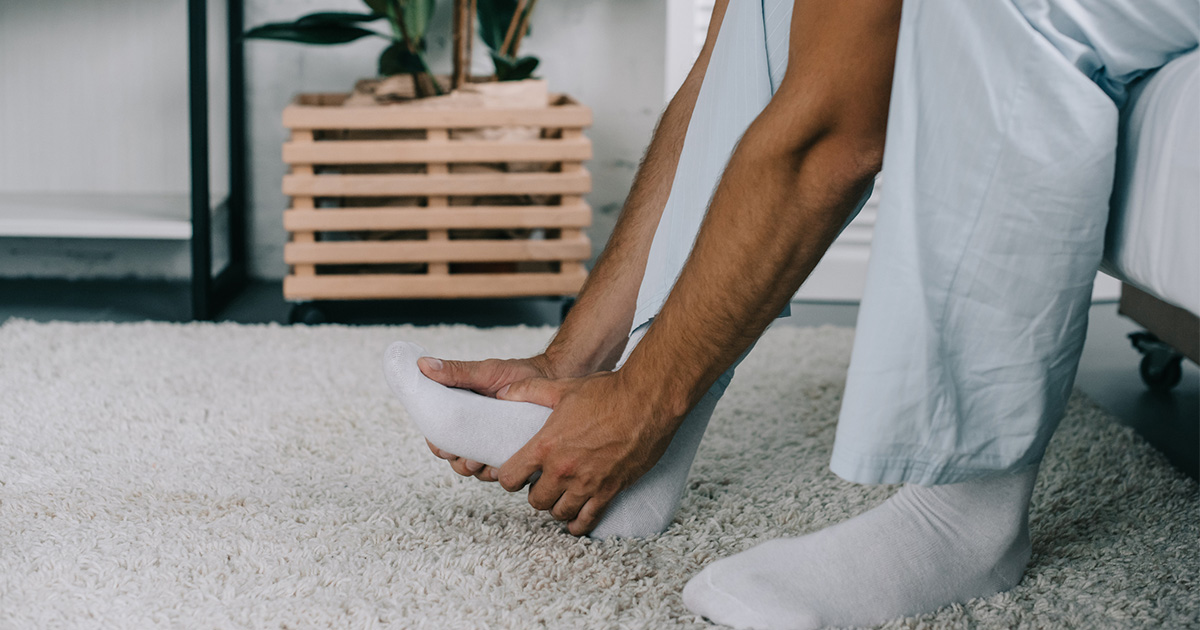
Hallux rigidus, also known as big toe arthritis, is the most common arthritis found in the foot. In fact, it’s so common that it’s likely either you or someone you know will suffer from this type of arthritis at some point in their life.
While there are a couple of reasons you may develop arthritis in your big toe ─ like genetics, a previous injury, or poor foot alignment from a bunion or having flat feet ─ the most common reason is just normal wear and tear that our feet endure over a lifetime.
Certain conditions that cause inflammation like rheumatoid arthritis, gout, and autoimmune disorders, can also increase your chances of developing arthritis in your big toe.
“Once you have any pain inside a joint that won’t go away and you can’t explain, it’s time to seek treatment,” said Karl Dunn, DPM, a podiatrist with Compass Orthopedics who performs surgery at McLaren Greater Lansing.
Pain is a chief complaint when patients visit Dr. Dunn in the office; however, patients can also experience swelling around the joint, a bump, and stiffness in the big toe with the inability to bend it.
“I will see patients in my office for a physical exam, and then we typically do an X-ray to get a good look at the toe joint and the cartilage around it,” said Dr. Dunn. “There are many things that we can do to make it feel better and prolong the need for surgery.”
Most people think that if they visit a podiatrist or orthopedic surgeon, surgery is the only answer. However, in reality, there are many different options that can be explored before surgery, including injections, over-the-counter medicines, changes in shoe gear, and orthotics.
“If we have exhausted all of the nonsurgical treatments and you are still experiencing pain and other symptoms, then it might be time for surgery,” said Dr. Dunn. “There are many surgical options that are now available for patients who are experiencing arthritis in their big toe.”
Some of these surgical options include:
Cheilectomy ─ where the surgeon will shave down any bone spurs to give your joint better movement. Osteotomy ─ where your surgeon will cut your toe bones to realign or shorten your affected big toe.
Arthroplasty ─ a joint replacement.
Arthrodesis ─ a joint fusion.
“For forefoot surgery, which includes the front of the foot and toes, most patients are non-weight bearing for two weeks after the surgery and then in a boot or shoe for four weeks,” said Dr. Dunn.
If you have pain in your big toe, talk to your doctor. You may be experiencing arthritis in your big toe, and the earlier you seek treatment, the more likely you are to be able to manage the symptoms with non-surgical options.
To learn more about the Orthopedic and Sports Medicine Institute at McLaren Greater Lansing, click here.
To read more articles about health and wellness, click here.